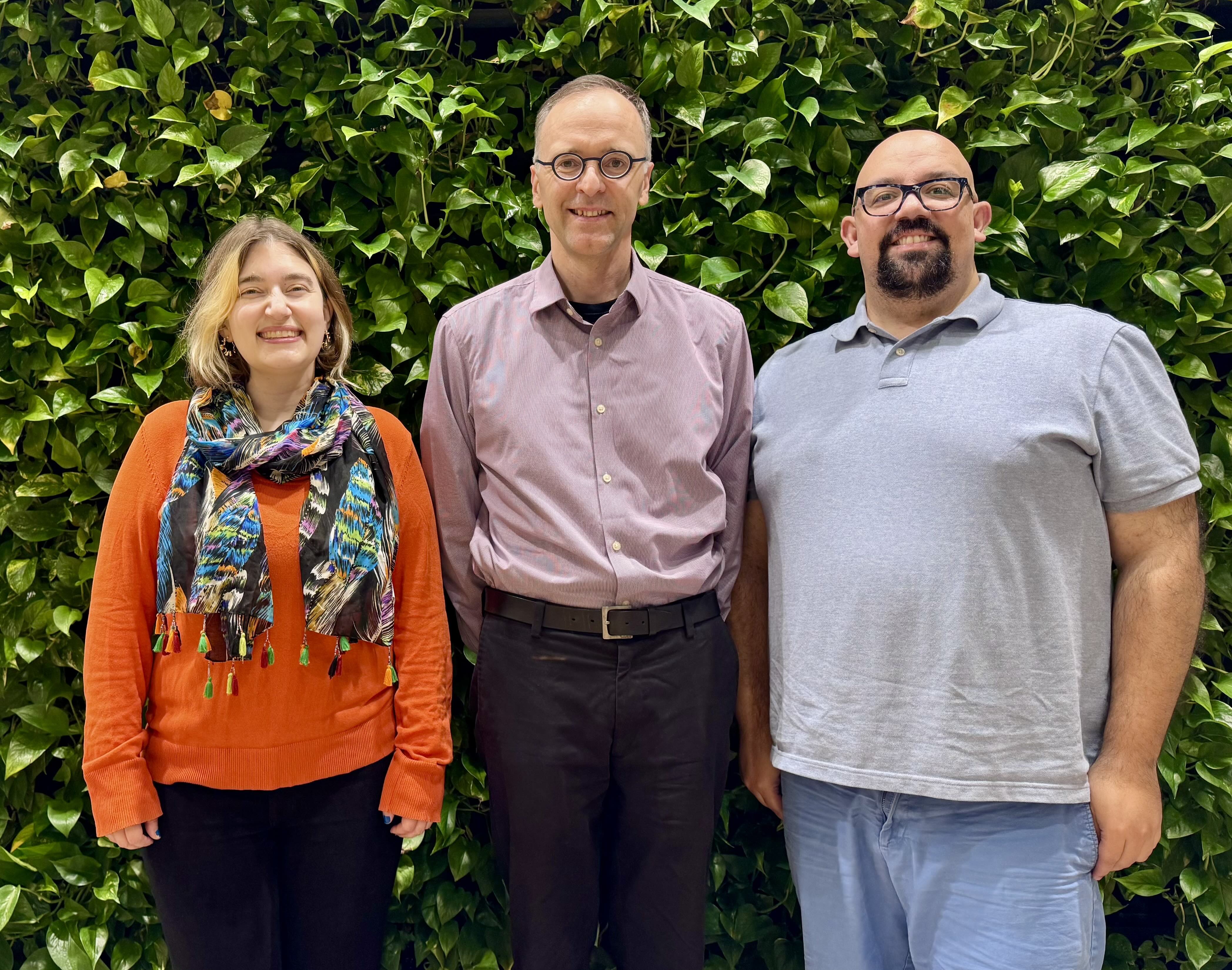As artificial intelligence (AI) tools like ChatGPT reshape what it means to write, learn, and teach, educators across disciplines are rethinking AI’s role in the classroom. Joshua Paiz and Dmitri Stanchevici, faculty in GW’s English for Academic Purposes (EAP) Program, applied their graduate studies in Applied Computer Science (ACS) to address this concern in their classrooms through FocusWrite, a secure, browser-based academic writing environment designed to empower students to demonstrate independent writing skills.
The Design of Human-Computer Interface course, designed and taught by Professorial Lecturer in Computer Science Elyse Nicolas, culminates in a final project where students develop a high-fidelity software prototype and interface design. After exploring multiple ideas, Paiz and Stanchevici chose to develop FocusWrite to address concerns around generative AI in the classroom, which is particularly relevant to their writing-heavy classes.
The EAP Program helps international students improve their writing, research, and communication skills. FocusWrite will limit and guide these students’ use of AI so they can focus on building foundational knowledge and linguistic skills, emphasizing student agency, reflection, and skill development.
“In the ACS program, I’m able to turn projects into something that I can take pride in owning because it addresses some real need that I have as an educator here at GW, and that’s been true of every course I’ve taken,” said Paiz.
In addition to being a professor, Paiz consults departments across the university on software development projects. For him, taking the asynchronous section of the HCI course was a perfect fit as it enabled him to learn the language and skills to manage those conversations more effectively while allowing him the flexibility to work around his teaching schedule.
By conceptualizing the course project design and structuring course assignments, guidance, activities, and exercises to lend to this project naturally, Nicolas taught students key skills in user interface (UI) and user experience (UX) design, including usability goals, visibility, emotional interaction, accessibility, and concrete design, that they relied on when developing their prototypes. The ultimate goal was to design for a positive user experience, and through weekly feedback sessions with Nicolas, they improved along the way.
“This project met the standard I hoped for when I designed the objectives for the course,” Nicolas stated.
Through these sessions, Nicolas fostered a collaborative learning environment that helped them understand the concepts and incorporate user feedback into their design. Nicolas referred to the sessions as mirroring what a UI/UX project manager would do for developers and designers, who in this case were her students.
Paiz and Stanchevici designed FocusWrite so that students can complete assignments in one of two modes: undistracted writing and writing with resources. The first mode is meant to reinforce students’ ability to organize and express their thinking without external materials. Writing with resources will allow selective access to instructor-approved files, links, and previous feedback. If they leave the full-screen view to use other tools, a banner will appear as a warning rather than shutting down their screen, as done in Respondus Lockdown Browser.
The feedback sessions directly informed this design, as the team initially relied on the metaphor of a stoplight with protected mode in red and semi-open composition in yellow. Nicolas and other students pointed out the negative emotional connotation of red and the accessibility issues with yellow, as certain shades can lead to eye strain over time, prompting them to opt for the banner to increase user satisfaction and engagement.
After each writing session, the software generates a detailed system report documenting actions such as access to resources or system interruptions. To encourage transparency, self-awareness, and mutual trust between learners and instructors, students can review and annotate these reports to offer their own perspective and context before submission.
Through FocusWrite, students will not only be able to learn how to use AI ethically but also test their written communication skills and overcome challenges on their own. This is extremely important for unconventional learners in the EAP program as they navigate a major transition and manage impostor syndrome. “It’s helpful for them to show their skills and that they can do something without AI to make them feel confident in their abilities,” said Stanchevici.
Fellow instructors in the EAP program were immediately excited by FocusWrite because the application to their own teaching was clear. A small-scale pilot is underway in the program while Paiz and Stanchevici focus on expanding its cloud-based functionality and refining its feature set. Their goal for the 2025-2026 academic year is to create a more sustainable and scalable version of the platform, supporting ongoing use in academic writing contexts and potentially laying the groundwork for wider adoption across GW.
“The response we’ve received from our colleagues is reaffirming for me to see that working at these disciplinary boundaries isn’t necessarily a bad thing. While it might make it hard for English and Computer Science people to identify me as either, it allows me to see problems that would otherwise go unseen and come up with meaningful solutions, which is really rewarding,” said Paiz.
As faculty and students innovating at the intersection of Computer Science and English, Paiz and Stanchevici bring a unique lens to the evolving challenges of writing instruction in an AI-rich academic landscape. FocusWrite exemplifies GW Engineering’s interdisciplinary ethos, offering a timely and student-centered response to a growing concern in higher education: With access to AI, how can educators assess students’ own skills?


